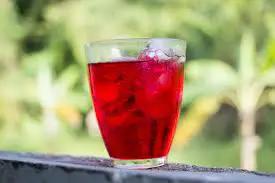Savoring the cool, crisp taste of bottled water is an everyday pleasure for many. It’s the go-to choice when we seek hydration and purity. But what if this seemingly straightforward choice isn’t as clear-cut as it appears? Recent research has exposed a hidden world within bottled water that might just leave you astonished. In this journey, we’ll uncover the intriguing truth behind that innocent-looking bottle.1
Behind the label of bottled water, there’s a story waiting to be told—one filled with unexpected twists. Imagine minuscule plastic particles dancing in your favorite brand, traces of medication lingering, and an array of mysterious chemicals mingling within. It’s a revelation that challenges the conventional belief that bottled water is the pinnacle of purity.
The Environmental Working Group (EWG) and the State University of New York (SUNY) have both delved deep into the world of bottled water, and their discoveries are anything but ordinary. These findings compel us to reevaluate our choices, question the transparency of the bottled water industry, and explore the intricate complexities beneath the surface.2
A Revelation on Lurking Contaminants in Bottled Water
Ever wondered what’s really inside that sleek bottled water you’ve come to rely on? A groundbreaking study by the Environmental Working Group (EWG) has given us a glimpse into the secret world of bottled water and the contaminants it may contain. This study, which scrutinized 10 different bottled water brands, revealed an average of eight contaminants per brand. Some of the shocking findings include caffeine, acetaminophen (a common pain reliever), fertilizers, solvents, plastic-derived chemicals, strontium (a radioactive substance), and trihalomethanes.
Two particular brands, Sam’s Choice (sold by Wal-Mart) and Acadia (from Giant Food supermarkets), raised concerns due to their levels of trihalomethanes, a chlorine byproduct known to be linked to cancer. These revelations not only make us question the purity of bottled water but also raise a crucial point – is bottled water really any safer than tap water when it comes to contaminants in bottled water?
The Concern With Chlorine in Drinking Water
Chlorine, a long-time friend in the world of water treatment, plays a vital role in eliminating harmful pathogens, making water safe for consumption. However, recent research has unveiled some unsettling concerns regarding chlorine and its byproducts.
- Formation of Trihalomethanes (THMs): Chlorine disinfection can lead to the formation of THMs, which have been associated with an increased risk of various cancers, including bladder and colon cancer.
- Health Impacts of Chlorine Byproducts: Haloacetic acids (HAAs), another group of disinfection byproducts, are a cause for concern due to potential reproductive and developmental risks.
- Impact on Respiratory and Skin Health: Chlorinated water, especially in showers, can release chloroform, which may worsen respiratory issues like asthma and cause skin and eye irritation.
- Chlorine and Birth Defects: Research has suggested a link between exposure to high chlorine levels or its byproducts and certain birth defects.
- Alteration of Taste and Smell: Chlorine can affect the sensory properties of water, making it less appealing to some.
These findings urge us to reconsider the idea that bottled water is inherently purer or safer than tap water. As we delve deeper into the world of bottled water, it becomes evident that there’s more to this story than meets the eye.
The Hidden Side of Chlorine in Bottled Water
Chlorine has long been the hero of water treatment, tasked with vanquishing harmful pathogens and ensuring our drinking water is safe. However, as we peel back the layers of bottled water, we encounter a hidden side of chlorine and its potential impact on our health.3
- Formation of Trihalomethanes (THMs): One of the primary concerns with chlorine disinfection is the formation of THMs. Studies have found a potential association between long-term exposure to THMs and an increased risk of various types of cancer, including bladder and colon cancer. It’s an unsettling revelation that challenges the perception of bottled water as a healthier choice.
- Health Impacts of Chlorine Byproducts: Apart from THMs, chlorine can form other disinfection byproducts (DBPs) like haloacetic acids (HAAs). Some studies indicate potential reproductive and developmental risks associated with exposure to high levels of HAAs. It’s a concern that raises questions about the potential consequences of regularly consuming bottled water.
- Impact on Respiratory and Skin Health: Chlorinated water, especially when used in showers, can lead to the release of chloroform, a type of THM. Inhaling chloroform over extended periods can exacerbate respiratory issues like asthma. Additionally, water with high chlorine content can cause skin and eye irritation, making us reconsider whether the water in that plastic bottle is as pure as it seems.
- Chlorine and Birth Defects: Research has indicated that exposure to high levels of chlorine or its byproducts might be associated with certain birth defects. A study published in Environmental Health found a potential link between prenatal exposure to THMs and a slight increase in the risk of ventricular septal defects, one of the common congenital heart defects. It’s a concern that adds complexity to our perception of bottled water’s safety.
- Alteration of Taste and Smell: Apart from health concerns, chlorine and its byproducts can influence the sensory properties of water. A distinct chlorine taste or smell might make the water less palatable for some individuals, prompting us to question whether our taste buds have been influenced by the very substances meant to purify our water.
As we uncover these hidden facets of bottled water, it becomes evident that the choice between bottled and tap water is not as straightforward as it may seem. Stay with us as we dig deeper into the complexities and revelations surrounding your hydration options.

A Deeper Insight into Contamination in Bottled Water: SUNY Study
In our quest to unveil the secrets of bottled water, we turn our attention to a comprehensive analysis conducted by the State University of New York (SUNY). This study offers a more profound understanding of contamination levels and its implications.
- The SUNY Research Project: The research project investigated 259 bottled water samples from 11 leading brands. These samples were sourced from 19 different locations in nine countries, including the US, China, Brazil, and Mexico. The comprehensive examination was conducted by a research team commissioned by Orb Media.
Alarming Findings: The study revealed some startling results:
- A staggering 93% of the bottled water samples contained detectable plastic particles.
- On average, each liter of water contained 325 plastic particles.
- Some samples displayed concentrations as high as 10,000 plastic particles per liter.
- Shockingly, out of the 259 bottles tested, only 17 were devoid of plastics.
- The predominant plastic fragment identified was polypropylene, the same material used in bottle caps.
- Comparative Analysis: One significant revelation from the study was that bottled water contained approximately double the amount of plastic particles compared to their earlier research on tap water.
- Global Giants Under the Microscope: The brands subjected to this rigorous examination included global giants like Aqua (Danone), Aquafina (PepsiCo), Dasani (Coca-Cola), and others.
The SUNY research project presents a vivid portrayal of the physical integrity of bottled water, casting doubts on the water’s purity and safety. As we delve deeper into the complexities of bottled water, it becomes evident that there’s more to the story than meets the eye. Stay with us as we continue to unravel the hidden truths behind your hydration choices.

The Dangers of Microplastics in Drinking Water
While we’ve explored the chemical mysteries and plastic revelations within bottled water, there’s another hidden threat that demands our attention – microplastics. These tiny fragments, measuring less than 5mm in size, have infiltrated not just our environment but also our cherished sources of hydration. The presence of microplastics in bottled water has raised significant concerns about their potential impact on human health. Beyond the plastic itself, what’s truly alarming is the potential leaching of harmful chemicals from these microplastics. Substances like bisphenol A (BPA) and phthalates, known endocrine disruptors, could be hitching a ride into our bodies along with these minuscule invaders. The consequences? A potential disruption of our hormone system, leading to reproductive issues, neurological problems, and an increased risk of cancer.
Microplastics also serve as carriers for environmental contaminants such as pesticides and heavy metals. These tiny particles, once ingested, may introduce these pollutants into our bodies, amplifying their potential harmful effects. The dangers of microplastics extend beyond the chemical realm – their sharp or irregular shapes can physically harm the delicate tissues of our digestive system, potentially leading to inflammation or other health issues. As our understanding of the risks associated with microplastic ingestion continues to evolve, one thing is clear – there may be unknown long-term effects that we’ve yet to discover. While we navigate this relatively new field of scientific exploration, it’s essential to remain vigilant and proactive in minimizing our exposure to these concealed threats.4
Minimizing Exposure to Microplastics and Chemicals
Now that we’ve shed light on the concealed dangers lurking in bottled water, it’s crucial to equip ourselves with strategies to safeguard our health while staying hydrated. Fortunately, there are proactive steps we can take to ensure the water we drink is as pure as possible and to minimize our exposure to unwanted contaminants.
- Opting for glass or stainless steel containers for beverages is a simple yet effective choice. These materials don’t leach chemicals and are free of microplastics. By selecting these options over plastic bottles, you reduce the risk of potential health hazards and contribute to environmental sustainability.
- Investing in a high-quality water filtration system for home use is another wise decision. Such systems help reduce contaminants in tap water, reducing the need for bottled water while ensuring the water you consume is cleaner and safer. This not only protects your health but also minimizes your environmental footprint.
- When choosing plastic bottles, look for those labeled as BPA-free. While they may still contain other chemicals, they won’t include BPA, a known endocrine disruptor. This small but meaningful choice can make a difference in your long-term well-being. Avoid reusing disposable plastic bottles, especially if exposed to sunlight or heat. Over time, more and more chemicals can leach from the plastic, potentially compromising the water’s purity. Instead, opt for reusable bottles made from safe materials like glass or stainless steel.
- Educating yourself about brands that have faced scrutiny over water quality is essential. Remember, clear water doesn’t always mean it’s free from microplastics or chemicals. Staying informed empowers you to make healthier choices when purchasing bottled water.
As we navigate bottled water complexities, remember that being proactive can significantly reduce potential risks.
My Personal RX on Hidden Chemicals and Contaminants in Bottled Water
As a doctor committed to your well-being, I’m here to provide you with essential guidance on navigating the potential hazards of bottled water. Our quest for clean hydration has uncovered some concerning facts, but fear not, there are ways to safeguard your health. Here are my expert recommendations:
- Choose Your Container Wisely: Opt for glass or stainless steel bottles to avoid potential chemical leaching from plastic.
- Invest in Water Filtration: Consider a high-quality water filtration system for your home. It not only ensures cleaner tap water but also reduces the need for bottled alternatives.
- Mindful Brand Selection: Stay informed about brands that prioritize water quality and transparency in their processes. Not all bottled water is created equal.
- BPA-Free Always: When opting for plastic, make sure it’s labeled BPA-free to minimize exposure to harmful chemicals.
- Reusable Water Bottles: Use reusable bottles made of safe materials, such as glass or stainless steel, rather than disposable plastic ones.
- Super Greens Powder: Consider supplementing your daily routine with a high-quality Super Greens Powder. This powdered supplement delivers the benefits of full-spectrum superfoods, enhancing your overall health and well-being.
- Protocol Guide: For comprehensive guidance on optimizing your health and hydration, explore our Protocol Guide, offering expert insights and actionable steps.
- Reduce, Reuse, Recycle: Embrace a sustainable lifestyle by reducing overall plastic consumption, refusing single-use plastics like straws, and buying products in bulk.
- Stay Informed: Regularly check for updates on water quality and emerging research to make informed choices.
- Hydration Wisdom: Remember, the key to healthy hydration isn’t just about the source; it’s about making mindful choices for your well-being.
By following these tips, you can take control of your hydration journey and make choices that prioritize your health while minimizing exposure to hidden chemicals and contaminants in bottled water. Your well-being is our priority, and together, we can stay informed and make the best choices for a healthier lifestyle.
Sources:
- Prakash, P. (2024, January 21). We have underestimated amount of tiny plastic particles in bottled water, study says. The Hindu. https://www.thehindu.com/sci-tech/science/one-litre-of-bottled-water-contains-around-one-lakh-micro-nano-plastic-particles-study/article67756402.ece ↩︎
- Environmental Working Group – Concerned about contaminants in your tap water? | Environmental Working Group. (2021, November 3). EWG. https://www.ewg.org/ ↩︎
- Systems, L. E., & Webfxlongs. (2020, January 20). Chlorine in drinking water: What are the effects? Longs Ecowater. https://longsecowater.com/blog/chlorine-in-drinking-water-what-are-the-effects ↩︎
- Sulpizio, J. (n.d.). Microplastics in our waters, an unquestionable concern. https://extension.psu.edu/microplastics-in-our-waters-an-unquestionable-concern ↩︎













 Subscribe to Ask Dr. Nandi YouTube Channel
Subscribe to Ask Dr. Nandi YouTube Channel










